There’s a massive gap between the number of people who need addiction treatment in the United States and those who actually get it. According to the 2021 NSDUH report, 46.3 million people 12 and older met the applicable DSM-5 criteria for having an addiction in the past year. Yet, only 6% got help at a specialty facility.
The addiction treatment gap happens for many reasons, and cost is one of the biggest drivers. Most people dealing with substance abuse issues (or their families) cannot afford to pay thousands of dollars for addiction treatment. And that shouldn’t come as a surprise, considering some treatment programs charge between $3,000 and $10,000 for a month of inpatient rehab, $1,400 and $10,000 for three months of outpatient rehab and $250 and $800 for 30 days of medical detox.
Of course, there are low-cost options that charge a few thousand. But the reality is that private-run and luxury rehabs charge anywhere from $17,400 to $100,000 per month for addiction treatment. Unless one is exceptionally wealthy, they have very little chance of getting the help they need. It’s troubling, especially since quality addiction treatment has been linked to long-term recovery and a better quality of life.

Health insurance can help cover drug and alcohol addiction treatment costs. But still, many people facing substance use disorders are not insured for different reasons, including:
And even those with insurance may still not be able to access treatment because of inadequate coverage for mental health and addiction services. Most plans don’t cover medication-assisted treatment (MAT) for opioid use disorders. Some, like Medicaid, cover MAT, but many states put requirements and limitations that make it hard to receive – though this might be changing.
About a decade ago, the Affordable Care Act mandated that private insurance programs cover addiction-related issues. This reform allowed many patients to get the help they needed – but it also created some kind of addiction gold rush.
Numerous treatment centers, including for-profit facilities, entered the market. Some saw an opportunity to capitalize on the increased need for services. As a result, there was a proliferation of treatment centers, ranging from reputable facilities to those with questionable practices.
The rapid growth of the addiction treatment industry has sparked concerns about the quality of care and oversight. Some facilities are accused of fraudulent billing practices, providing unnecessary services, and even exploiting vulnerable individuals seeking help for their addiction. These treatment centers engage in aggressive billing practices, maximizing insurance claims without necessarily providing commensurate quality of care.
Assistant State Attorney Alan Johnson told NPR about a case he investigated in 2017. The family sent their daughter to South Florida for treatment for 7 months. But she overdosed and died. At the end of the year, their insurance company was billed for $660,000.
And the lack of standardization doesn’t make it any easier. The varying treatment modalities and program lengths make it hard for people to navigate and compare services effectively.
So, on the one hand, there are families who are desperate to find help for their loved ones – but they don’t know how to tell legitimate treatment centers from unethical ones. And on the other hand, there’s a highly unregulated substance abuse treatment industry on the greed side.
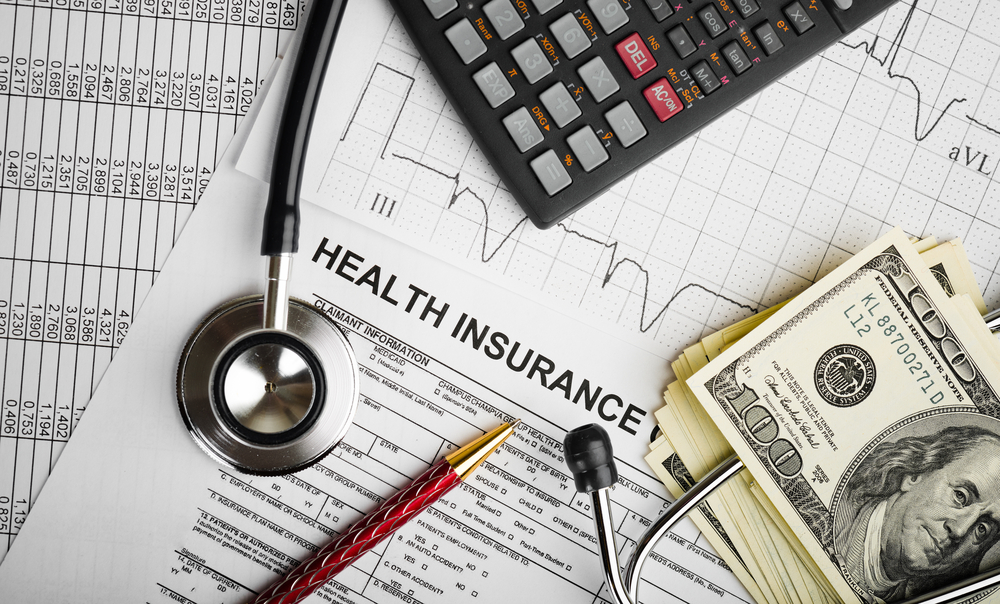
In recent years, states have taken steps to address some of the challenges within the addiction treatment industry. These efforts include improving regulations, enhancing oversight, and implementing measures to ensure the quality and ethical practices of treatment facilities. However, the issues surrounding the high cost and lack of accessibility to addiction treatment persist.
Research has also uncovered many rehab programs that still use aggressive marketing tactics that have nothing to do with medical care. For example, they’ll claim to have a five-star chef, indoor and outdoor pool, acupuncture, massage, etc. And the worst part is that most of these programs don’t even offer evidence-based care, which is critical for addiction treatment and recovery.
Cost or finances are just one side of the coin. The other side is access to care, which presents a whole set of challenges.
Many states have more people with addiction and mental health issues housed in jails than in rehab centers. Today, a bigger percentage of inmates in prisons and jails meet the criteria for substance use disorders, but only a tiny portion of the inmates have access to treatment.
The war on drugs policies saw an increase in incarceration for drug-related problems. However, focusing on punishment rather than rehabilitation has been ineffective and has even led to several negative consequences.
For one, it does little to address the root causes of drug or alcohol abuse. Substance use disorders are complex health issues often influenced by aspects like mental health problems, socioeconomic conditions, and lack of access to proper healthcare. Incarceration, without adequate treatment and support, fails to address these root causes and may exacerbate the challenges individuals face upon release.

Comparatively, rehabilitation offers a more humane and practical approach to dealing with substance use disorders. Treatment programs, including counseling, therapy, and medical interventions, can help people overcome addiction and reintegrate into society as productive members. Rehab addresses underlying issues leading to substance abuse and reduces the likelihood of relapse and reoffending.
Moreover, from an economic perspective, investing in rehabilitation programs is more cost-effective than incarceration and it works. Sending people to prison who have addiction problems and have violated parole or probation conditions is straining the system and taxpayers’ money.
The costs associated with maintaining a large prison population, including housing, security, and administrative expenses, can be significantly higher than funding treatment and support services. Additionally, the societal costs of lost productivity strained families, and increased recidivism associated with incarceration further highlight the inefficiencies of punitive drug policies.
Community-based treatment programs can be a great alternative to incarceration. These programs aim to provide those struggling with substance use disorders the support they need to overcome addiction, reduce the burden on the criminal justice system, and contribute to a healthier, more rehabilitative society.
In recent years, there has been increasing awareness of the necessity to transition towards a public health approach to drug-related issues, focusing on prevention, treatment, and harm reduction instead of punitive measures. Supporting those with addiction issues through rehab not only aligns with principles of compassion and justice but also proves to be a more pragmatic and cost-effective strategy for addressing the complexities of addiction in society.
Common expenses in addiction treatment programs include detoxification services,inpatientor residential care, outpatient treatment programs, medication-assisted treatment, therapyand counseling, and aftercare support services. These components contribute to the overallcost, varying by treatment type, duration, and location. For a more comprehensiveunderstanding, it's best to consult specific treatment centers or insurance providers fordetailed cost breakdowns.
Staffing costs significantly impact theexpense of addiction treatment programs due to theneed for highly skilled professionals, including therapists, doctors, nurses, and support staff.These professionals provide comprehensive care, from medical detox to therapy and aftercaresupport, necessitating competitive salaries to attract and maintain a qualified workforce. Thelevel of expertise required for effective addiction treatment underscores the role staffingexpenses play in the overall cost of these programs.
Yes, there are more affordable options for addiction treatment in the USA, includingcommunity-based programs, state-funded facilities, sliding scale payment options in certaincenters, and support groups like Alcoholics Anonymous or Narcotics Anonymous. Additionally,some organizations offer scholarships or grants for individuals seeking treatment. Exploringthese alternatives can provide cost-effective routes to recovery for those facing financialconstraints.
Individuals and families can navigate financial challenges by exploring insurance coverageoptions, seeking out sliding scale fees or state-funded programs, applying for grants andscholarships specifically aimed at addiction treatment, and considering nonprofitorganizations that offer support or funding. Additionally, some treatment centers providefinancing plans or payment assistance to helpmanage the costs of recovery. Forcomprehensive guidance and resources, consulting with addiction specialists or financialadvisors familiar with healthcare funding can be beneficial.
Vaping has become increasingly popular among young people. That's primarily because of its lower per-use cost and belief that it's less harmful than traditional cigarettes. But vaping nicotine is not the safest alternative to smoking cigarettes as it poses serious health risks, especially among youth and young adults.
Vaping devices use e-liquids that contain nicotine, which is highly addictive and can harm the developing brain. Vaping also exposes users to toxic chemicals and metals that may damage the lungs and increase the risk of respiratory illnesses. In February 2020, the Centers for Disease Control (CDC) confirmed over 2,800 e-cig or vaping use-associated lung injury (EVALI) cases and 68 fatalities linked to the condition. EVALI cases are most evident among those who modify their vaping devices or use modified e-liquids.
Despite these risks, many young adults continue to vape. Most of them overlook or underestimate the effects of nicotine. And the marketing tactics don't help either, as companies promote their products as a trendy, cool, and harmless activity. They also use candy, fruit, mint, alcohol, and food flavors that appeal to youth, increasing the risk of nicotine addiction.
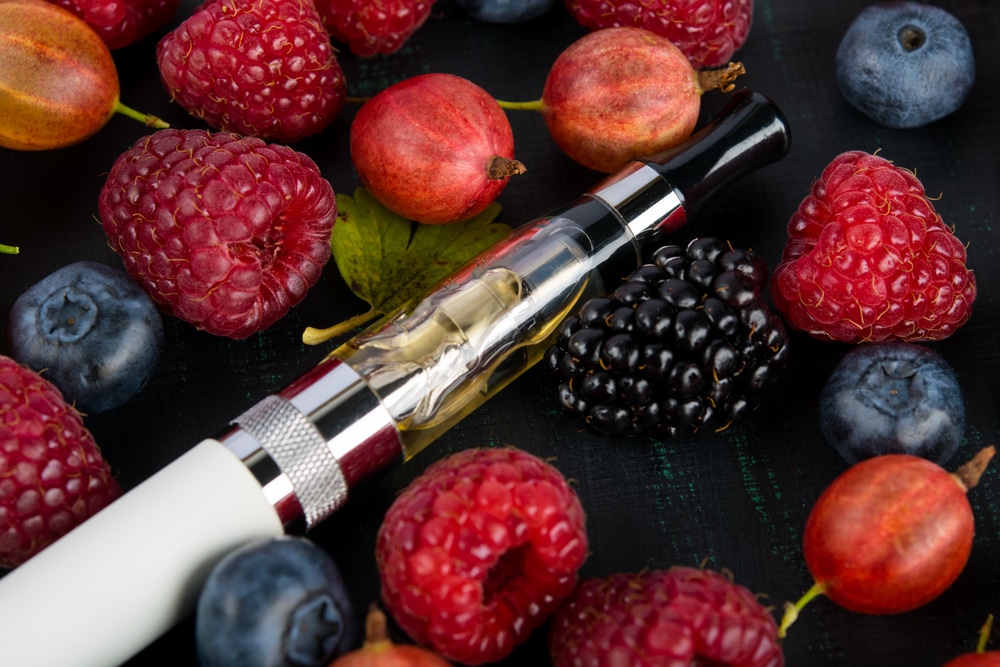
Vaping involves inhaling and exhaling vapor produced by an electronic device called an electronic cigarette or vape pen. The device heats a liquid, called e-liquid or vape juice, which typically contains nicotine, flavorings, and other chemicals, to create a vapor that is inhaled.
Nicotine is a highly addictive substance that stimulates the release of dopamine in the brain, which creates a pleasurable sensation. When a person uses nicotine repeatedly, their brain adapts to the increased dopamine levels and becomes dependent on it to function normally. This is what leads to addiction.
A National Youth Tobacco survey found that over 2 million middle and high school students used e-cigs in 2021. Sadly, 99% of e-cigarettes found in most places in the US contain nicotine. But these products don't disclose that they contain nicotine. And even those who say they have 0% nicotine have been found to contain nicotine.
Nicotine harms the developing brain and can affect impulse control, mood, learning, and attention. It can also increase the risk of future addiction. Beyond addiction, here are some other scary vaping facts:
Most people ask, is vaping worse than smoking, or is vaping safe? Vaping is less harmful than smoking traditional cigarettes because it does not involve burning tobacco, which produces harmful tar, carbon monoxide, and many other toxic chemicals. However, it is essential to note that vaping still involves inhaling chemicals and potentially harmful substances such as nicotine, flavorings, and other additives. These substances can cause health issues such as lung damage, respiratory problems, and nicotine addiction.
E-cigarettes can be just as addictive as traditional cigarettes because many of them contain nicotine, which is highly addictive. In fact, some e-cigarette products may even have higher nicotine levels than conventional tobacco products. It is also worth noting that some e-cigarettes are designed to deliver nicotine more efficiently than traditional cigarettes, which can further increase the risk of addiction.
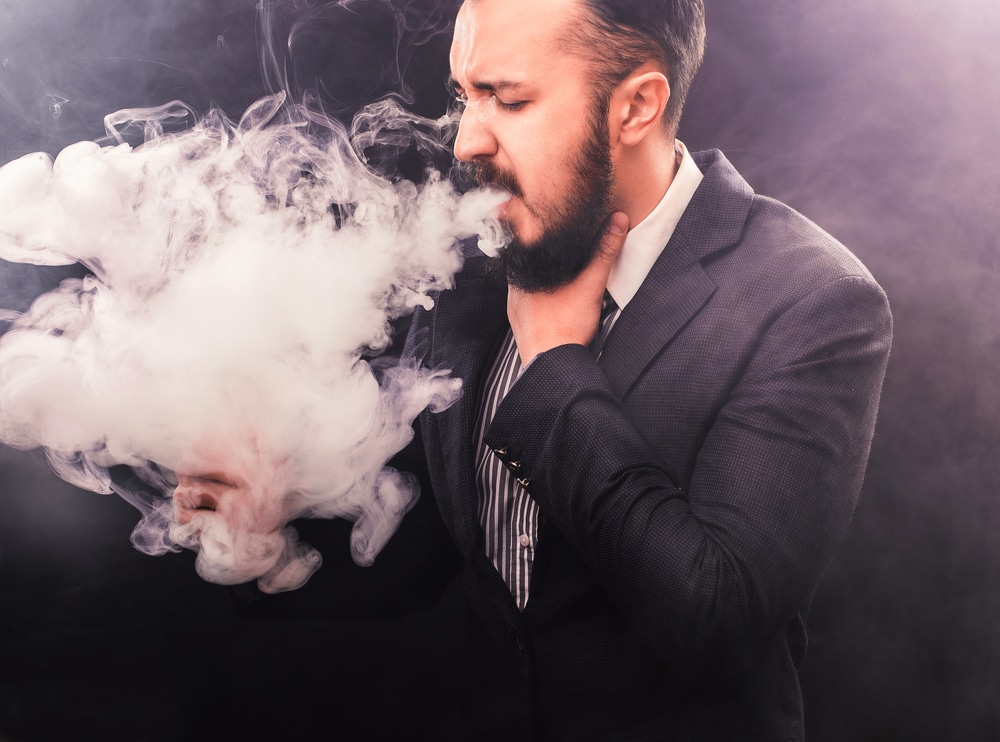
Despite being promoted as a smoking cessation tool, electronic cigarettes have not been approved by the US Food and Drug Administration (FDA) as a smoking cessation device. A recent study found that a majority of those who vape as a way to quit smoking ended up continuing to use both traditional cigarettes and e-cigarettes. Besides, e-cigarettes can still deliver nicotine, a highly addictive substance that can make quitting smoking more difficult. The same goes for nicotine pouches, snus and other oral nicotine products.
Many vaping devices can also be used with other drugs, including marijuana. A 2018 study found that 10.9% of college students had vaped THC in the past 30 days, an increase from 5.2% in 2017. Worse, other substances like methamphetamine, DMT, crack cocaine, and synthetic cannabinoid receptor agonists can also be vaped. In 2016, the US Surgeon General cautioned that e-cig use among young adults is a significant public health concern in the country.
Nicotine withdrawal symptoms are physical and psychological symptoms when people who smoke tobacco or vape stop using. Symptoms usually peak within the first few days after quitting and can last several weeks or months. However, the severity and duration of symptoms can vary from person to person. Some common nicotine withdrawal symptoms include:
As mentioned earlier, nicotine exposure during adolescence can affect brain development, including attention, learning, and mood regulation. It may increase the risk of addiction to nicotine and other substances later in life.
Preventing youth vaping requires a multi-faceted approach, which may include the following:
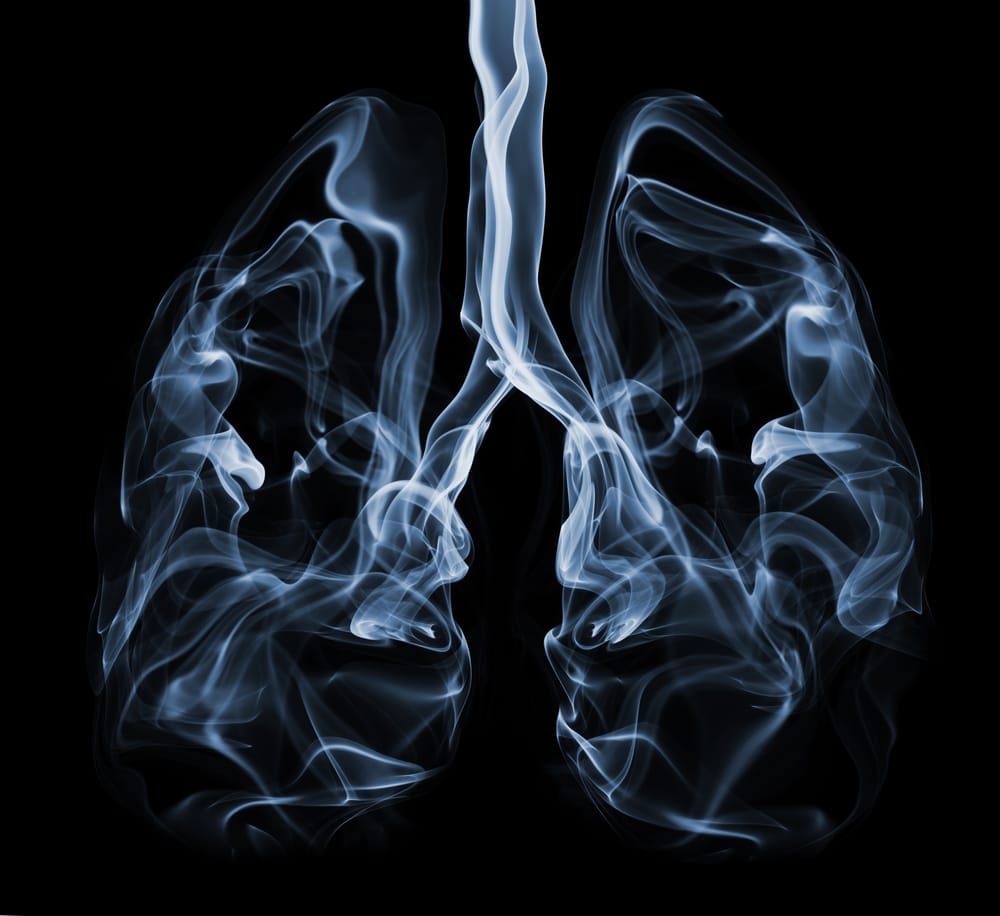
Managing nicotine withdrawal can be challenging, but some strategies can help alleviate symptoms and increase the chances of quitting smoking or other nicotine-containing products. Here are some ways to manage nicotine withdrawal:
It is also essential to seek professional help when trying to manage nicotine withdrawal, especially for individuals with a history of addiction or other health conditions. A healthcare professional can provide guidance and support, prescribe medications or nicotine replacement therapy, and help develop a personalized quit plan.
Methadone has been used to treat people with extreme pain for decades and has been approved by the Food and Drug Administration to treat opioid addiction. According to SAMHSA, methadone can help people with opioid use disorder reduce their cravings and withdrawal symptoms, stay in treatment longer than those who are not taking it, and lower their chances of using illegal opioids.
However, some are still skeptical of its effectiveness in treating opioid addiction, citing the potential for misuse and abuse. They think that methadone can quickly become a replacement addiction and that it can still be used to get high. But proponents, who include top addiction professionals, argue broader use of methadone could help address the current opiate overdose epidemic in the US. They advocate for easier access to methadone treatment for opioid addiction, citing its potential benefits in helping people manage cravings and withdrawal symptoms.
This article will explore both sides of the argument and discuss the risks and benefits of using methadone as an addiction treatment.
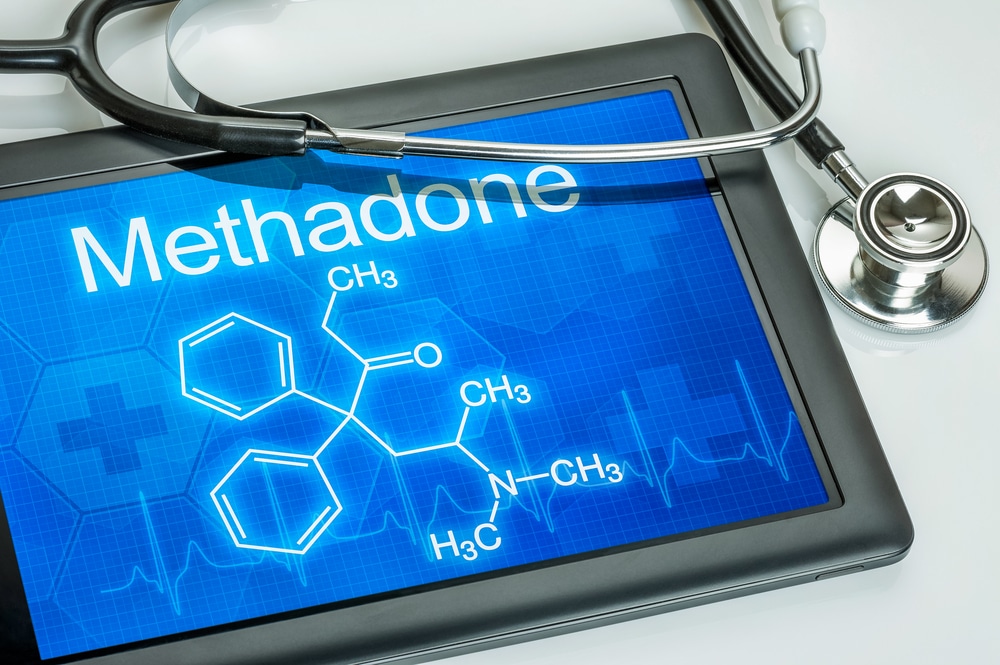
Methadone is a powerful drug used for pain relief and opioid use disorders. It is a synthetic opioid, but unlike other opioids, it has been approved by the FDA to treat opioid addiction. It is one of the three medications approved in the US for opioid addiction treatment.
The drug works by binding to and blocking the opioid receptors in the brain, thus reducing cravings and preventing withdrawal symptoms. It is typically administered once a day at room temperature, though some people require more frequent doses. Methadone is available in liquid, powder, and tablet forms.
Methadone is extraordinarily effective if the standards of any epidemic are considered. A study found that those receiving the drug were 59% less likely to die of an overdose than those who did not receive it.
Methadone is used as part of a treatment program for opioid use disorder. Those receiving the drug to treat opioid addiction must receive it under the care of a qualified healthcare provider.
This provider prescribes the medication and supervises its use. After a period of stability, some people may be able to take the medication home and administer it themselves. However, this is an option only after they've gone through frequent tests and counseling sessions.
The duration of methadone treatment varies depending on the individual and the severity of their addiction. But the National Institute on Health recommends a minimum of 12 months. Some patients may need long-term maintenance. But those who are getting off the drug should work with their healthcare provider to gradually taper off the medication to avoid any life-threatening methadone withdrawal symptoms.
Methadone has long been controversial in the addiction treatment world. While advocates are proposing a significant expansion in access to the drug, the providers of methadone for addiction treatment are warning that caution should be used when prescribing the medication.
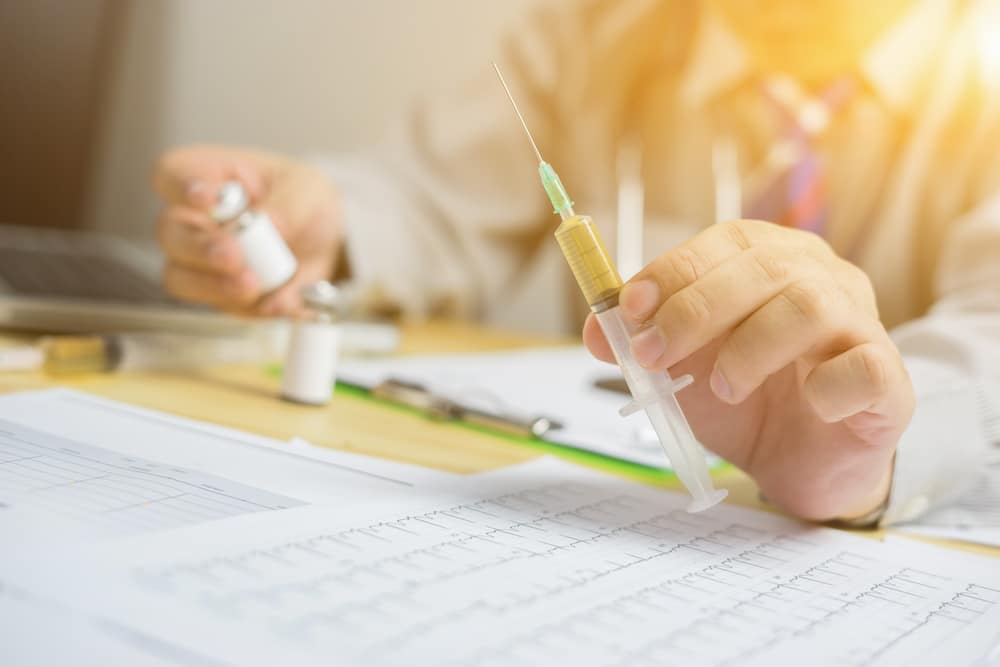
The primary concern for those who oppose expanded access to methadone is its potential for misuse and abuse. While methadone is effective for treating opioid addiction, allowing doctors to prescribe it to anyone could lead to low-quality care, abuse, and overdose on methadone itself.
At the moment, patients need to visit a methadone clinic each day for a single dose. They also need to be a part of an opioid treatment program and go through frequent drug tests, take part in counseling sessions, and prove that they've had opioid addiction for over a year.
Opponents of expansion strongly believe it's essential that methadone treatment is accompanied by counseling and other services that opioid-trained professionals are qualified to offer. They also point to worrying statistics about methadone-related overdose. A recent estimate by NIDA found that methadone is involved in 3% of opioid-related overdoses.
On the other hand, advocates argue that methadone can be prescribed responsibly, with adequate monitoring and oversight. They point out that the benefits of broader access to methadone outweigh the potential risks. And that the risk of overdose is too high and that methadone can help treat addiction, reduce cravings and prevent long-term health problems caused by opioid addiction. According to the proponents, the opioid crisis has reached a level where any measure taken to reduce the number of overdoses is worth exploring.
Those in favor of expansion don't see why increasing access should be a problem considering any healthcare provider can prescribe methadone for chronic pain treatment. They argue that strict regulation is only imposed on addiction treatment, which makes little sense and is a sign of the discrimination and stigma faced by OUD patients. Currently, no other drug is as restricted for approved use (opioid addiction), yet it has few restrictions when prescribed for pain management.
It is worth noting there have been fewer methadone-related deaths even after significant restrictions were lifted during the COVID-19 pandemic. The lift allowed "stable" patients to bring home their weeks' worth of methadone doses instead of going to a clinic every day for an amount.
Methadone is a safe and effective treatment when taken as prescribed. Patients should work closely with their healthcare provider to find the correct dose and frequency of administration that works for them. Patients should also take precautions when taking methadone, such as:
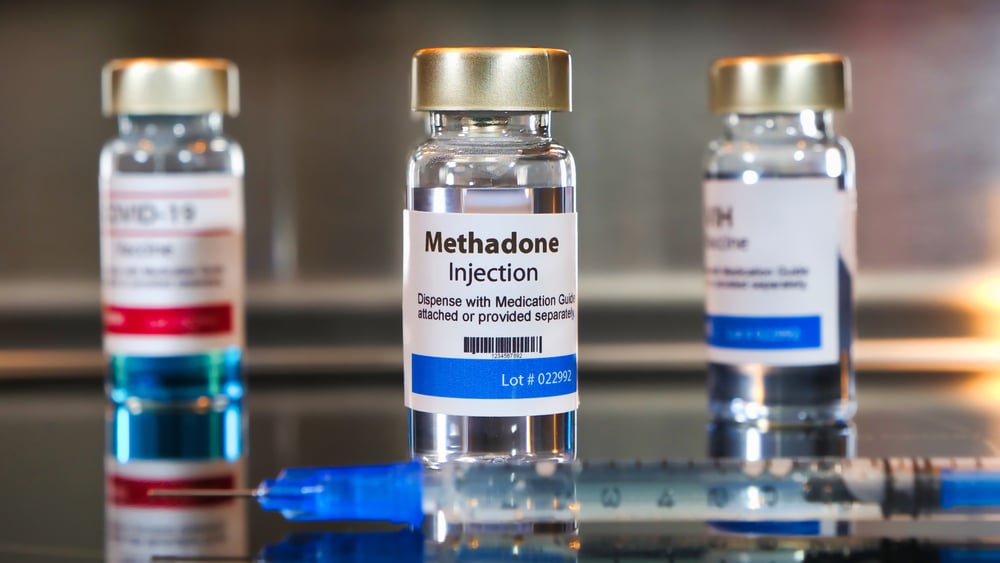
Some common side effects of methadone include:
Methadone is generally considered safe to use during pregnancy. However, it will likely cause harmful side effects to a developing fetus and should only be used when the benefits outweigh the risks. Breastfeeding women should consult their doctor before taking methadone, as it can be passed to the infant through breast milk.
For people with opioid addiction, many facilities offer comprehensive drug addiction treatment programs. These treatment plans include counseling, support groups, medical monitoring, and other therapies designed to help patients gain control of their addiction and begin the journey toward recovery.
One of the most common questions about drug rehab programs is how long they typically last. The answer to this question depends on various factors, including the type of program and the individual's specific needs.
However, a typical drug rehab program will last somewhere between 30 and 90 days. And while some people only need to go through rehab once, others may require multiple stints to achieve and maintain sobriety. According to the National Institutes of Health, about 40 to 60% of people relapse.
No matter what, though, it's important to remember that there is hope and help available. Drug rehab may not be easy, but it can be incredibly effective at helping people overcome addiction and rebuild their lives.
Addiction is a disease that alters the way the brain functions. It changes the brain's wiring and affects how chemicals are released and received. This can lead to changes in mood, behavior, and physical appearance. Because addiction affects the brain, it can be difficult to overcome without treatment.
Addiction treatment involves a combination of therapy, medication, and support groups. The goal of treatment is to help people stop using drugs, manage their cravings, and avoid relapse. Recovery from addiction is a long process, and it may take some time to achieve long-lasting sobriety.

The first step in any rehabilitation program is detoxification or detox. This is a process of ridding the body of toxins that have built up from continued drug or alcohol use. Detox can be difficult and uncomfortable, but it is an essential first step in overcoming addiction.
For most people, detox takes between 7 and 10 days. But the length of stay might be longer for more serious drug or alcohol abuse cases. Medical staff closely monitor patients during this time to ensure their safety and comfort.
Average detox duration for various drugs:
After detox, individuals may participate in an inpatient or outpatient treatment program.
Inpatient rehab provides around-the-clock care and support, which can be especially beneficial for those struggling with severe addiction. Treatment typically lasts 28 days, although some programs may be shorter or longer depending on the individual's needs.
Outpatient treatment programs help people recover from substance abuse disorders without requiring them to stay in rehab. The care is typically less intensive and less expensive than inpatient treatment, making it a good option for people with a strong support system at home. Outpatient treatment programs can last for a few weeks or several months, depending on the individual's needs.

Detox and treatment are important steps in overcoming addiction, but they are only the first steps on a long road to recovery. Aftercare is an essential part of this process, as it helps to keep people on track and prevent them from relapsing.
Aftercare typically includes individual counseling, group therapy, and 12-step programs. An aftercare program provides vital support and accountability. Without aftercare, people are much more likely to relapse.
The length of an aftercare plan will be based on individual needs. Some people are in aftercare for weeks or months, others for a year or more.
Most addiction treatment programs follow a similar structure. After an initial assessment, patients typically begin with detoxification and withdrawal management. This is followed by individual and group therapy, which can help patients to understand the root causes of their addiction and develop healthy coping mechanisms. The length of time spent in each phase of treatment will vary depending on the type of substance used and the length of use.
These programs offer a range of benefits, including:

30-day addiction treatment programs are typically short-term and involve detoxification, counseling, and support groups. These programs often cost less than long-term ones and are often covered by insurance.
While 30-day programs can be effective for some people, they are not for everyone. People with severe addiction cases may need to spend even longer in addiction treatment. Also, those suffering from health conditions caused by drug or alcohol use may need more advanced care.
A 60-day addiction program is a long-term program designed to help people overcome their addiction. Studies have shown that many people can build new habits within two months, making 60-day programs more effective at helping people overcome their addiction.
In addition, 60-day programs provide more time for people to receive treatment and support, improving their chances of overcoming addiction. The main downsides with 60-day rehab are cost and that they might not be suitable for those who can't take an extended period of time off from work or school.
A 90-day addiction program is a long-term treatment option for those suffering from chronic relapse or severe substance use disorders. According to the National Institute on Drug Use, research shows that better outcomes occur with a longer duration of treatment. This means that patients who complete a 90-day program have a significantly higher rate of abstinence than those who only receive shorter-term treatment.
In addition, patients in a 90-day program are more likely to complete other important recovery milestones, such as completing a detoxification program and participating in aftercare. While a 90-day program requires a significant commitment, it can be an essential step on the road to recovery for many patients.
Individuals who need extended care options after a 90-day program can join sober living houses that provide additional support. Sober living houses are safe, drug- and alcohol-free environments where one can live with other people in recovery. They can be a great option for those needing extra support and structure while learning to live successfully without drugs or alcohol.
Sober living houses also have staff members who can help with any challenges. Generally, individuals may stay in sober living homes as long as they want, provided they adhere to the house rules.
Drug rehab programs typically take around 30 to 90 days, but the length of time may vary depending on your specific situation and needs. If you're struggling with addiction and are ready to get help, we can connect you with a quality drug rehab program that meets your unique needs. This could be one of the most important health care decisions you will make in your life. Learn more about your options from our directory.
Every generation has its slang, and Gen Z is no exception. The use of emojis became quite popular with Gen Z. And now they’re using emoji to sell drugs and to generally talk about them with friends. They bank on the fact that most adults don't have a sense of how emojis work.
To any unsuspecting adult, the emojis look ordinary and harmless. However, they are often being used to buy and sell illicit drugs.
Drug abuse is prevalent among teens and young adults. With the current technology, they can easily purchase any illegal drug from social media pages run by drug traffickers. With a simple direct message (mostly with an emoji or more), the drugs of choice, including crack cocaine, are delivered to them in just a few minutes. Often, they make payments in cash, so you are unlikely to notice something is off.
Every drug dealer targeting teens have perfected the use of emojis, now commonly known as the emoji drug code. By doing so, they easily advertise their products on social media. Drug-themed social media posts are often not flagged or taken down because it is difficult to differentiate them from regular posts.

The Drug Enforcement Administration (DEA) recently released an emoji drug decoder to help educators, parents, and caregivers decode the emojis their loved ones use and potentially save lives.
DEA public information officer Brian McNeal said that when there is a case of overdose and no way to trace the source, you can go through the phones and computers of your loved ones to see the emojis used in conversations with drug dealers. The emoji drug decoder can help you identify the drugs they overdosed on.
According to the DEA, emojis are now commonly used as dealer advertising for high potency drugs. A select few are currently universal symbols for large batches of drugs. The DEA revealed that they started looking at social media risk factors after identifying several overdoses.
After going through the phones of the deceased, they noticed that specific emojis kept showing up in conversations. Later, they managed to decode the emojis.
Shane Catone, a Deputy Special Agent in charge of the DEA's Chicago Division, said that traffickers started communicating with emojis because their target market is teenagers who spend most of their time on social media.

The traffickers advertise their contraband on various social media platforms, including Instagram, Facebook, Snapchat, and messaging apps like WhatsApp.
Some of the emojis are straightforward to figure out. For example, the pill emoji represents fake prescription medications or pills.
Other emojis may be difficult to decode. For instance, a key emoji represents cocaine; a brown heart represents heroin and a blue heart meth. Another difficult emoji to decode is a chocolate candy bar that represents Xanax.
The banana emoji is commonly used as code for Oxycodone, whereas a Christmas tree, palm tree, clover, and cloud for marijuana. The maple leaf emoji is also code for marijuana.
Below is a summary of the emojis and what they mean for ease of reference.
The emojis are not a conclusive indication of illegal drug use. However, the emojis combined with behavioral change or a low performance at work or school may indicate that your loved one is struggling with drug addiction.
While addressing the use of emojis to buy or sell drugs, DEA public information officer Brian McNeal said the pills drug dealers sell on social media are counterfeit prescription drugs laced with fatal amounts of fentanyl.
The pills range from normal-looking ones to colorful ones that resemble kids' vitamins. According to McNeal, the colorful pills often contain meth.
Drug dealers often transport the fake prescription pills in bags of candy. Often, the laced prescription pills result in overdoses.
Other than emojis, teens and young adults struggling with substance abuse use slang terms to refer to drugs. Here are a few drug slang terms used in day-to-day conversations and their meaning.

The emoji chart is not conclusive, and it has the potential to grow exponentially. For this reason, it is a good idea to monitor your children's activities on social media. Since drug dealers target teenagers on social media, the ads are likely to pop up on their phones. It would also be best to periodically check any updates on the chart from the DEA's website.
If you can't check their phones, monitor your children's behavior. You are likely to notice a behavior change when they use illegal drugs. You can also use the emoji drug chart to start a conversation about drug and substance abuse dangers.
The emoji drug dealers are using may seem like a harmless way to communicate, but they could be putting your loved ones in danger. If you suspect your loved one is using drugs and communicating with dealers through emoji, or if you notice sign of addiction call for help.
There is no shame in seeking out assistance. Addiction is a difficult disease to overcome alone. With the right resources and types of treatment, your loved one can get the support they need to break free from the grip of addiction and start on the path to recovery.
Ketamine is an anesthetic drug that affects the central nervous system by antagonizing the n-methyl-d-aspartate (NMDA) receptor. Like most dissociative anesthetics, ketamine has a high potential for abuse.
Ketamine has hallucinogenic effects. It changes your perception of sounds and sights, makes you feel detached, and makes you feel like you aren’t in control.
Ketamine is FDA-approved for use as a pain reliever for chronic pain and anesthetic. Unfortunately, it is often abused.
Although ketamine has a long-standing reputation as a recreational drug, its FDA-approved version has become popular in its role as an anti-depressant. Additionally, studies have shown its effectiveness in reducing drug and alcohol abuse.
This article discusses ketamine therapy and its benefits under supervised care.
Clinical trials focusing on alcohol and cocaine addiction revealed that patients who were prescribed therapy and ketamine had better results than those who went for therapy minus ketamine treatment.
Patients addicted to cocaine received doses of IV ketamine for five days. Additionally, they went through a 5-week mindfulness relapse prevention therapy. On the other hand, patients struggling with alcohol addiction received a dose of ketamine on their second week of 5-week motivational enhancement therapy sessions.
At the end of the trial, researchers concluded that ketamine treatment played a role in preventing relapse. Researchers argued that ketamine treatment alters how patients’ brains deal with cravings. Additionally, they argued that ketamine motivates individuals to stop abusing drugs and control their behavioral interactions. Ketamine treatment may also improve the outcome of behavioral therapy.
The clinical trials discussed above are not conclusive. There is a need for extensive research on the role of ketamine in addiction treatment.
Note that the use of ketamine in addiction treatment should be under the strict supervision of medical practitioners in clinical settings. Patients should only receive doses of ketamine as and when prescribed by their doctors to avert ketamine abuse.
Medical practitioners can use ketamine to treat depression. Additionally, it can be used as an antidote for suicidal thoughts.

Most treatments for suicidal thoughts, including anti-depressants, talk therapy, electroconvulsive therapy (ECT), and transcranial magnetic stimulation (TMS), take several weeks to be effective. Sometimes, you may have to try multiple treatment options at once to gain relief.
Using ketamine for depression has proved effective. The doses that medical practitioners prescribe in treatment for depression are small.
It is still unclear how ketamine works. However, researchers suggest that it targets NMDA receptors in the brain, binds to the receptors, and consequently increases the amount of glutamate, a neurotransmitter, between the neurons.
The glutamate triggers connections in the AMPA receptors resulting in the release of molecules that allow neurons to communicate across new pathways. This process is called synaptogenesis. Synaptogenesis alters your cognition, mood, and thought patterns, making you less depressed.
Ketamine may also treat symptoms of depression by reducing the signals that take part in inflammation. These signals are often linked to mood disorders. Therefore, ketamine may prevent mood swings by reducing the signals.
Ketamine comes in various forms, including white powder. The FDA-approved form for depression medication is a nasal spray known as esketamine/ Spravato.
Doctors prescribe esketamine to adults who have a major depressive disorder, treatment-resistant depression, or are suicidal.
Patients with treatment-resistant depression get the nasal spray twice weekly for the first four weeks, then once a week from the fifth to the ninth week. If they still need the nasal spray after the ninth week, they will get it once every two weeks.
The other forms of ketamine that are not approved by the FDA include; tablets, IV infusion, or a shot in the arm. IV infusions are done explicitly by doctors. Some doctors may prescribe pills for use at home. However, it is not recommended since ketamine has a high potential for abuse.
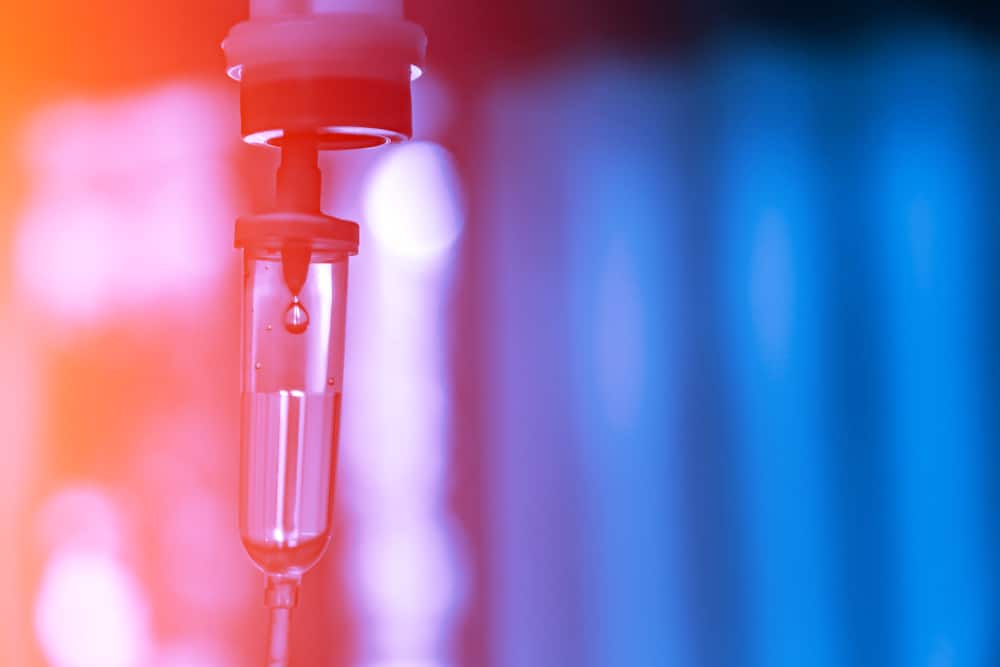
The process of IV infusion takes place for approximately 30 minutes. Immediately after the drip ends, you will have the dissociative experience for about 20 minutes. Your doctor will be present during the entire process. The dissociative experience wears off after 20 minutes.
Research shows that most patients appear to be asleep during IV infusion. They neither talk, nor move. Most doctors prefer not to interfere unless the patient specifically asks for something or asks where they are.
After ketamine treatment, patients need to undergo talk therapy. Talk therapy is an essential part of depression treatment. During talk therapy, medical practitioners equip you with the relevant skills to handle your depression. It is practical and empowering for most patients. For those with mild depression, talk therapy may be sufficient.
All drugs have side effects. However, the benefits you will get from using ketamine for depression outweigh the side effects you will experience.
Here are some side effects that you may experience after ketamine infusions:
Usually, dissociation and perception disturbances are noticeable when you get the first infusion but fade away afterward.
Long-term use of ketamine may have additional side effects. Scientists are still researching the issues surrounding ketamine abuse.

The main problem regarding ketamine therapy is addiction. Ketamine shows a lot of promise in treating mental health conditions and addiction. However, ketamine is a highly addictive narcotic, and addicts can still get high off it.
There is a possibility that patients who undergo ketamine therapy may become dependent on it. Long-term use of ketamine may have long-term effects. Patients may develop tolerance or unidentified side effects.
Another concern is the risk of cross-addiction. Cross addiction refers to instances when an addict develops a second addiction, in this case, ketamine addiction.
There is a need for more studies on ketamine treatment to realize its benefits in addiction and depression treatment.
If you are struggling with an addiction, check out treatment addiction programs that you can enroll in. You can also check our blog for resources on addiction and mental health issues.
Polydrug use – the practice of using more than one drug at a time – intensifies the effects of any individual drug and makes them more lethal. People mix drugs for a range of reasons, including:
Sadly, there isn’t a safe level of drug use – so there’s no way of predicting the effects of one drug, let alone multiple drugs. Mixing drugs with alcohol increases the impact on the body and brain and may lead to overdose. According to the CDC, almost 80% of opioid deaths in 2016 involved another drug or alcohol.
Cocaine, both freebase and powdered, causes stimulant effects and side effects. This can include high energy and mental alertness, constricted blood vessels, insomnia, anxiety, paranoia, restlessness, cravings for more as the drug starts to wear off.
Alcohol is a central nervous system depressant. Its effects are opposite to those of stimulants like cocaine. Alcohol slows heart rate, speech, breathing, reflexes, and reaction time. So, people may use alcohol to reduce cocaine’s effects like twitching or anxiety.
On the other hand, they may use cocaine to increase their physical energy after drinking alcohol. Alcohol also boosts euphoric effects from drugs like cocaine because it indirectly acts on GABA receptors, increasing the release of some neurotransmitters.
Alcohol and cocaine blend is a toxic mix. When one mixes the two, they create new metabolites, including cocaethylene. Cocaethylene is stronger than either alcohol or cocaine alone and increases toxicity to the liver, heart, and other major organs.
It also stays around the body for days to weeks, increasing the chance of severe side effects. Cocaethylene increases the risk of a sudden stroke, paranoia, violent behavior, heart attack, liver damage, seizures, depression, anxiety, intense drug cravings, cancer, and sudden death.

The toxicity is not limited to illicit drugs alone. People who combine drugs like opioid painkillers, sedatives, or anti-anxiety medications with alcohol are also at an increased risk for severe side effects. Prescription medications are a wide classification of drugs with a variety of uses.
They can help calm anxiety, relieve pain due to surgery or illness or maintain impulse control. But still, they tend to cause nausea, drowsiness, loss of coordination, and changes in blood pressure. Long-term side effects of these drugs may include heart problems, internal bleeding, and liver damage. It’s important to stick to what the doctor prescribes to avoid unnecessary effects.
Mixing prescription drugs with alcohol can cause adverse effects because of drug interactions. Alcohol not only alters the performance of the drugs but can also negate or heighten their effectiveness. Each prescription medication has its own potential negative effects that can be exacerbated when mixed with alcohol.
In addition to the effects above, the mix can change a person’s actions and thoughts, making risky behavior a definite threat. It also raises tolerance, leading people to ingest or drink more, trying to chase the high. This, in turn, can cause fatal overdoses, alcohol poisoning, and addiction.
It’s common for people to combine alcohol and caffeine at parties and clubs to keep the fun going. This can take the form of whiskey and coffee, vodka and energy drink, rum and soda, or some other mix meant to deliver the perfect double-buzz. While this seems like a good idea, some negative side effects warrant consideration.
A while back, the FDA issued warnings to companies like Four Loko that made caffeinated alcoholic drinks. This was after reports of alarming hospitalization linked to the drinks swirled. According to the Federal Trade Commission, consumers didn’t notice how much alcohol they took because caffeine masks the sense of intoxication – inducing more drinking.
Alcohol makes one feel more relaxed. But it also has the residual effect of making one feel tired. People add in the caffeine, so they’re relaxed without feeling tired. Energy drinks and caffeine can mask how drunk someone is.
They can also boost energy levels, allowing one to drink longer and more. Mixing alcohol with caffeine or energy drinks can cause heart problems, alcohol-related injuries, and weight issues.
Like prescription drugs, combining illicit opioids and alcohol is extremely dangerous. Both these substances are central nervous system depressants and can cause various effects, including brain damage and death. Sadly, CDC reports that people addicted to alcohol are two times more likely to become addicted to heroin. Most of them use alcohol or heroin to enhance the sedative effects of individual drugs and attain a stronger high.
Mixing alcohol and heroin increases the chances of a user having severe side effects. This includes more risk of developing addiction, certain health issues, and possibly a fatal overdose.
According to CDC, there were more than 14,000 heroin-related deaths in the US in 2019. Alcohol leads to nearly 7x the number of deaths as heroin. Heroin is one of the most addictive drugs globally, but alcohol has a reputation for causing dependency and addiction too.
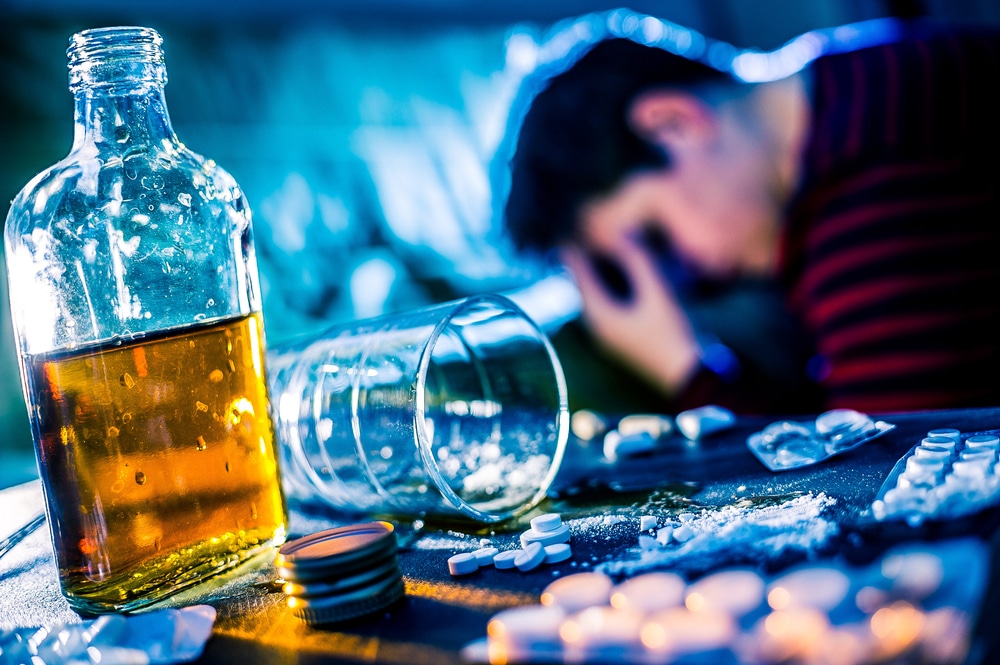
Meth is a type of drug known to elicit a powerful, short-lived high, decreasing appetite, and increasing wakefulness. Meth use causes an increase in energy levels and alertness, irregular heart rate, trouble sleeping, and hypertension. Long-term complications of meth are anxiety, confusion, weight loss, meth mouth, paranoia, hallucination, and aggression.
Alcohol and meth’s contradictory effects are concerning for a range of reasons. First, people who mix these drugs may consume more alcohol to feel its accustomed effects or feel more inebriated – resulting in alcohol toxicity. Second, those who end up consuming more while high on meth overlook cognitive impairment and drive, placing others at risk.
Combining meth and alcohol poses a range of dangers an increase in risky behaviors. These include unsafe sex, exposure to STIs, cardiovascular disease, compromised decision-making abilities, high blood pressure, risk of birth defects and seizures.
Hallucinogens refer to various drugs that alter one’s awareness of their surroundings, thoughts, and feelings. They are often divided into dissociative drugs and classic hallucinogens, both of which cause hallucinations and false perceptions of reality. When under the influence of hallucinogens, people often report rapid, intense emotional swings and hearing sounds, seeing images, and feeling sensations that seem real but aren’t.
Mixing alcohol with hallucinogens can provoke even more dangerous side effects and result in co-occurring disorders. Someone who uses LSD, PCP, DMT, ketamine or Mescaline and drinks alcohol may suffer from nausea, vomiting, headaches, panic attacks, and faintness. Combining the two substances can also increase one’s heart rate.
In severe cases, they may lose consciousness or have a seizure. Moreover, alcohol increases the chances of experiencing a “bad trip” by worsening depression and increasing frightening hallucinations. Sadly, the effects of hallucinogens can prevent one from realizing how much alcohol they’ve taken, causing them to take more. In which case, they may end with alcohol poisoning.

Abusing any drug comes with its own risk. But introducing alcohol to the equation can bring about other risks and amplify the dangers of the drug. If you or someone you care about cannot stop using, it’s best to seek help. Treatment centers exist to help people with polydrug use issues and can help you or your loved one lead a clean life, free of drug-related issues.
Nothing scares a parent more than the thought of their child abusing drugs. But unfortunately, that’s a reality that most parents may have to deal with at some point in time. According to the National Institute on Drug Abuse 2012 Monitoring the Future survey, 40% of 12th graders, 30% of 10th graders, and 13% of 8th graders had used a drug at least once in the past year. If you suspect that your child is smoking drugs, it’s best to uncover the truth, and get them immediate help.
Many teens (and even adults) who smoke are new to drug use and are scared of injecting. They assume that smoking is safer and less addictive. But drugs are dangerous irrespective of how they’re used. All ways of using drugs can lead to drug addiction – though smoking gets drugs to the brain more than other modes of administration, so it actually tends to increase the chances of one becoming addicted.
Catching drug use problems early can help prevent addiction, withdrawal symptoms, and other drug-related issues.
Common drugs that are smoked include:
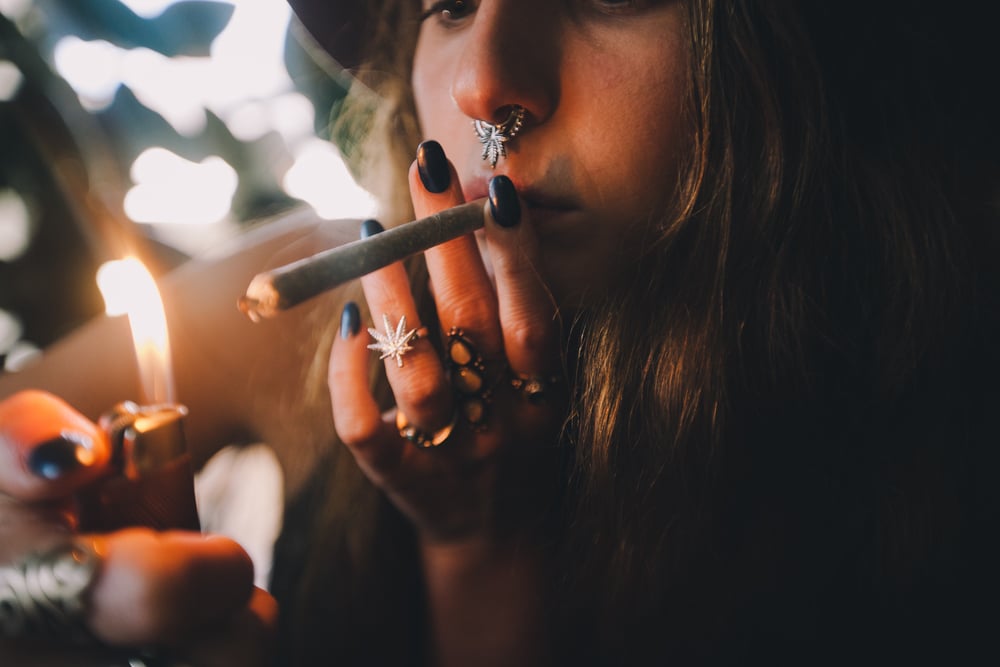
The dangers of smoking these drugs can be severe and include addiction, heart attack, lung problems, painful withdrawal, and deadly overdose. One may also run into problems with the authorities, including the drug enforcement administration. Fortunately, with suitable treatment options, freedom from substance abuse is possible.
Drug abuse is a serious health care concern that needs immediate care. According to the American Addiction Centers, drugs can have permanent effects on the body. If you suspect that someone you love is smoking drugs, identifying these common and usually overlooked paraphernalia should serve as a warning to take action.
Recreational drug abusers use aluminum foil (or tin foil) to smoke various substances, including illicit drugs and diverted prescription pills. They put the drug on a flat piece of foil or shape the foil into a pipe before heating it with a lighter, a process called freebasing. Drugs in black tar or powder form are easy to use this way.
Examples of drugs that are often smoked with aluminum foil are:
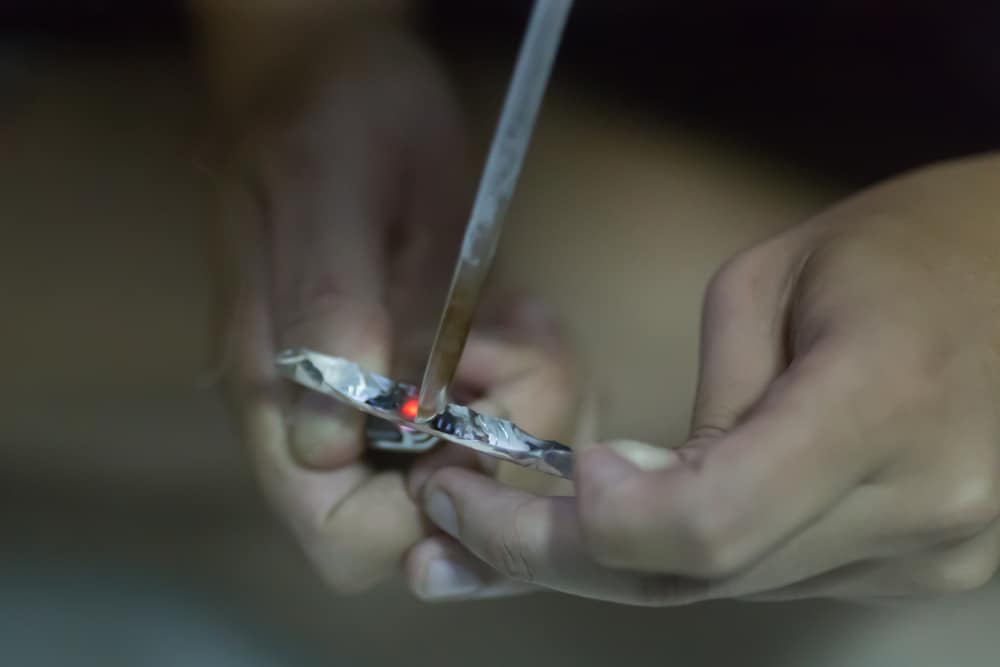
Look out for the presence of burned or discolored tin foil, as these are the most apparent signs of use. You may also want to check out fake-looking soda cans, beer cans, and aerosol containers. Some people use them to try to conceal scent. Using tin foil to smoke drugs may cause a series of risks and health problems, like:
Glass pipes are designed for drug use. Many people smoke drugs out of glass pipes because they’re easy to use, convenient, and comfortable compared to snorting or using foil. Different types of pipes exist for different illicit drugs. Knowing how to distinguish these pipes can help you identify the drugs which your loved one is abusing.
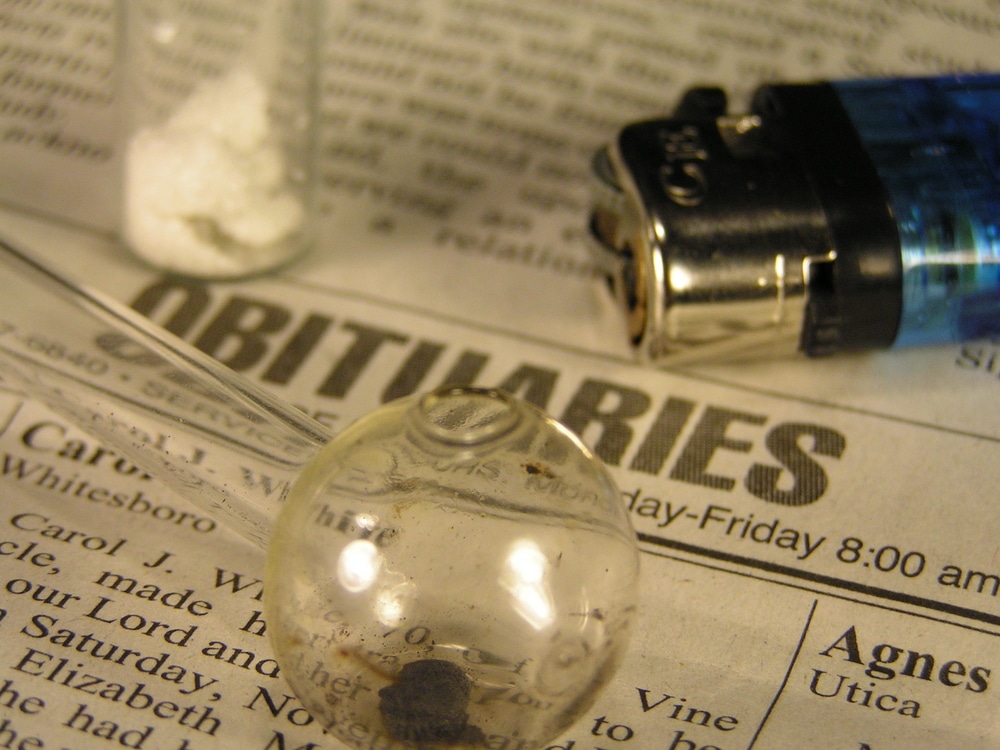
Glass pipes used to smoke crack cocaine have a unique shape. They’re typically straight, long tubes of glass that are often sold as oil burners. If your loved one is smoking cocaine, you may catch a pungent smell that seems like a mixture of burning plastic and urine.
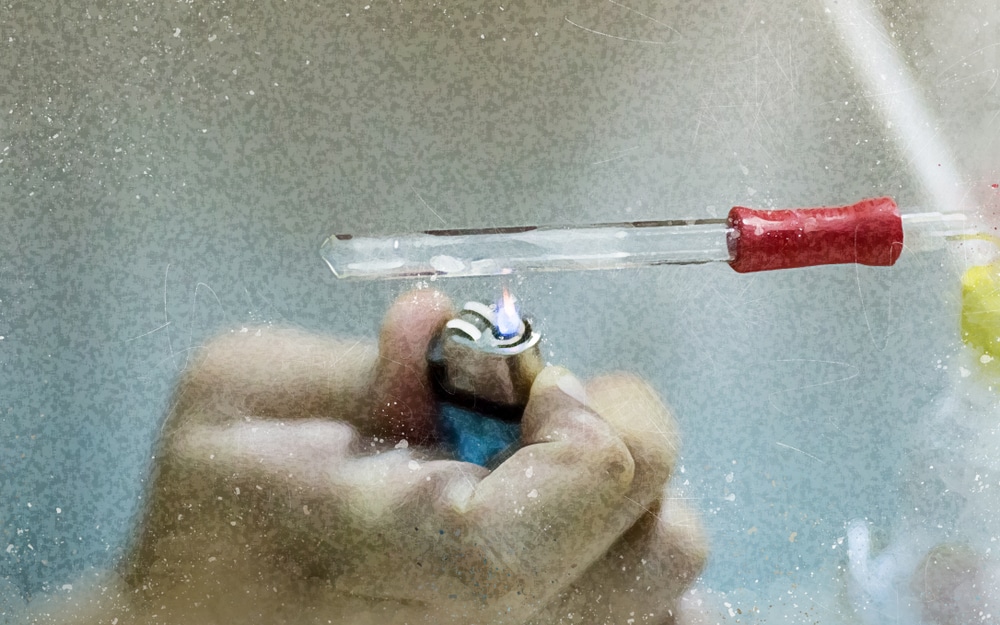
Glass pipes for meth have a bulb shape on one end of the pipe. If your loved one is smoking crystal meth, you’ll notice a yellow or burnt residue on the glass. You may also smell a stale chemical odor – though it tends to disappear after a short while.
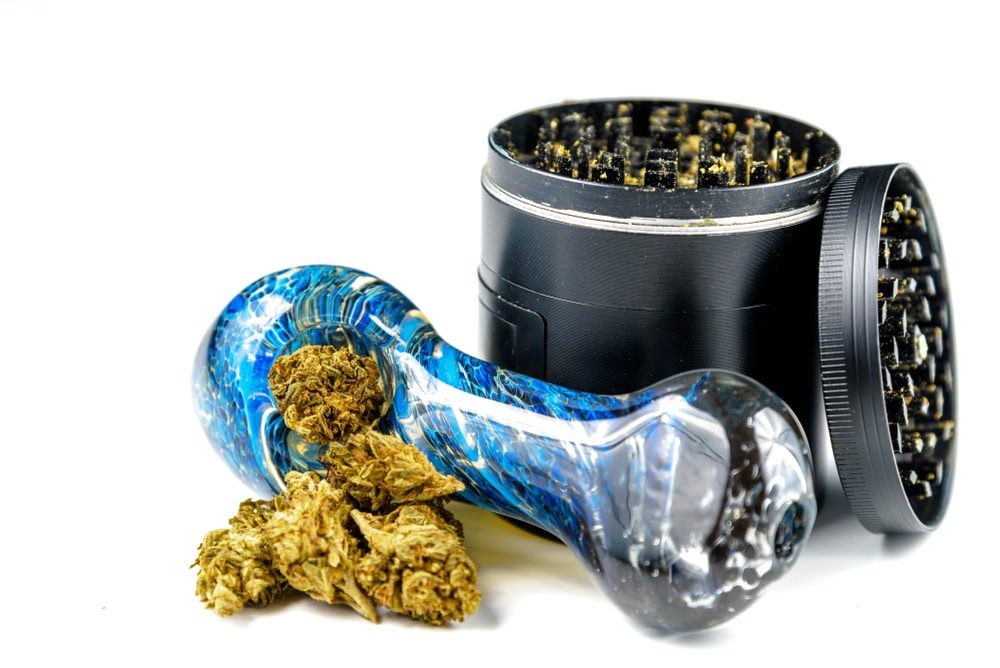
Glass pipes for marijuana resemble those for meth. However, instead of a bulb shape, marijuana pipes have a colorful open bowl with an elongated mouthpiece. If your loved one is smoking marijuana, you’ll catch a lingering smell in the room and surrounding spaces. Marijuana can also be smoked out of a metal pipe or bong.
Heroin pipes look like a combination of meth and marijuana pipes – a glass cylinder with a sphere or enclosed bowl at the end. Heroin has a lighter, more subtle, and almost sweet smell, like some types of incense. It can also smell like vinegar, depending on how the heroin was made.
In addition to a bong or pipe, drug users use tobacco rolling papers to smoke marijuana. They either roll the marijuana into a cigarette (or joint) or hollow out a cigar and replace the tobacco with marijuana. Cigarette rolling papers are also used to smoke heroin.
Users sprinkle the powder heroin on tobacco and roll a cigarette. Often, they can cook it (using heat and acid to liquefy) and spreading the mixture on a cigarette. Sometimes, marijuana is combined with heroin into a cigarette in a process called lacing.
Straw is used to inhale steam and smoke as it wafts off the heroin, cocaine, meth, prescription drugs, etc., on the aluminum foil, can, or container.
Smoking is one of the most common forms of drug administration. It’s also the fastest way to get the drug to the brain. However, smoking can lead to substance abuse and addiction. That’s because tolerance to hard drugs builds quickly.

Addiction isn’t the only problem. Smoking crack, heroin, meth, and amphetamine can damage the lungs, worsen asthma, and lead to a deadly overdose. It also increases the risk for pneumonia, bronchitis, and coughing. Smoking marijuana cigarettes laced with embalming fluid and PCP can cause body tissue, lung, and brain damage as well as inflammation and sores.
Besides, most street drugs aren’t pure. Dealers cut them with other substances, which can cause other negative health effects.
It can be disheartening to discover that your loved one is abusing drugs. But the good news is that it’s never too late to get help. Various treatment facilities offer short and long-term rehabilitation programs to help patients get off of alcohol or drugs.
Some even offer counseling for patients and their loved ones and can be beneficial to you. Texas, is one of the states in the forefront of treatment options for patients including rehab centers.
So, go ahead and reach out to an addiction treatment center. As an option to learn more about how to spot the signs of smoking drugs, you can contact the editorial staff of the many public health periodicals and websites.
Withdrawal symptoms are one of the toughest parts of overcoming addiction. Almost everyone finds it challenging. Once you get to the other side, however, you'll realize that your efforts to manage your withdrawal symptoms have been well worth it. You have the rest of your life ahead of you, free from the chains of drug or alcohol addiction.
Withdrawal often produces a wide range of side effects. Acute withdrawal leads to physical health issues like congestion, fatigue, nausea, shakiness, or vomiting. On the other hand, protracted withdrawal causes mental health problems ranging from anxiety to depression and so on. A medical detoxification program is usually effective in managing these withdrawal symptoms.
When you drink alcohol or abuse drugs regularly, your brain adjusts to the presence of the substance. You develop a tolerance to the substance and need more of it to feel good again. At this point, you may become physically and psychologically dependent. In which case, going without the substance for a certain period can induce withdrawal symptoms. Withdrawal happens when you fail to provide your mind or body with a drug on which it has become dependent.

Withdrawal is your body's way of showing that the drug concentration is declining. These symptoms often develop when you reduce the amount you're using or quit "cold-turkey." Continued withdrawal may cause severe symptoms and feelings. This is why it's essential to get professional help at an alcohol and drug rehab. It's critical to deal with withdrawal in a safe and supervised environment with professionals. This helps manage all the challenges that come with withdrawal syndrome.
Withdrawal symptoms can be mild to severe, depending on the type of drug, amount of use, and the duration of use. Stimulants like meth and cocaine often trigger psychological symptoms, whereas prescription drugs, heroin, and alcohol cause both psychological and physical symptoms. According to the National Institute of Drug Abuse, withdrawal symptoms may appear within a few hours of not using or be delayed for several days. Common symptoms include:
These symptoms may last for a few days to a few months. Meaning, you may experience mood swings, challenges sleeping, as well as constant fatigue for months. Serious effects like confusion, high fevers, and seizures may also develop. In worse cases, withdrawal can be life-threatening.
Quality treatment centers never use rapid detox kits or cold turkey methods. Instead, they provide therapy and medications to manage your withdrawal symptoms. Detox is the first stage of a successful addiction treatment program. It frees your body from the toxins of alcohol and drugs before long-term treatment begins.
Medically supervised detox is also critical in identifying and treating any substance-related medical emergencies. These emergencies may arise during the detox phase due to active substance abuse. Never attempt to self-detox. That would only expose you to potentially life-threatening withdrawal symptoms and the high-risk of relapse.

Nothing is more comforting and relaxing than being in the company of people who've traveled the same path as you. Support groups like Narcotics Anonymous or Alcoholics Anonymous can provide tips and encouragement to people in recovery, like you. Support from friends, family members, and other recovering individuals is critical for minimizing relapse. When you join these support groups, you get surrounded with like-minded people with similar goals.
Exercise gives your recovery a lively change. It boosts the presence of happiness-inducing chemicals like dopamine. So, the more you work out, the more dopamine gets to your brain. And when your fitness rises, so does your mood and mental health. Studies reveal that physical activity and exercise can help boost dopamine levels. Science also shows that in addition to support groups and detox, exercise is a tremendous counter-withdrawal tool. It reduces compulsive drug abuse as well as cravings.
Eating healthy meals is an essential part of detox, as it replaces lost nutrients and helps keep your energy levels up. It also keeps your body and brain healthy. You'll benefit from a basic healthy diet – but it helps to understand your nutritional deficiencies. This table will guide you to making the right diet choice depending on what you're detoxing from.
| Substance of Abuse | Vitamin and mineral deficiency | Deficiency Effect on body |
| Alcohol | Vitamin A Vitamin B1, B2, B6 Vitamin C Calcium | Anemia Korsakoff’s disorder Osteoporosis Diabetes High blood pressure Severe malnutrition |
| Opiate (heroin and morphine) | High-fiber diet Whole grains Beans Peas Leafy vegetables | Constipation Diarrhea Nausea and vomiting |
| Stimulants (Meth and crack) | Proteins Omega-3 Flaxseeds Eggs Dairy products | Depression Coronary heart disease |
And while you are at it, don't forget to keep hydrated. Withdrawal tends to leave you feeling dehydrated. So, drinking lots of water can help your body heal properly. It also keeps the thirst that's easily mistaken for cravings at bay.

Insomnia is one of the withdrawal symptoms for people with a physical dependence on substances. So having a guideline for good sleep hygiene can help you address insomnia. This includes things like establishing sleep rituals and reestablishing your body’s natural circadian rhythms. Sleep rituals like sleeping and waking up at the same time, or avoiding screens 30 minutes before going to bed can help you fall asleep fast.
Withdrawal can be challenging and even fatal. If you are trying to quit using drugs or alcohol, it's advisable to seek professional help. Medically-supervised detox means you'll be under expert care throughout the withdrawal process. Withdrawal management is a big part of the medical detoxification process. It is the most comfortable way to manage your withdrawal symptoms.
You should note that detox alone isn't enough to support long-term abstinence. But it's a crucial step in a holistic abuse treatment that offers the tools you need to quit using and minimize relapse. The good thing is that most addiction centers offer detox and other therapies in-house.
Withdrawal symptoms associated with different substances can vary widely in intensity and duration. Opioid withdrawal, for example, often involves flu-like symptoms such as muscle aches, nausea, and vomiting, along with intense cravings for the drug. Alcohol withdrawal can range from mild symptoms like tremors and sweating to severe manifestations such as seizures and delirium tremens, which require immediate medical attention. Benzodiazepine withdrawal may lead to rebound anxiety, insomnia, and in severe cases, seizures and psychosis. Stimulant withdrawal can cause fatigue, depression, and increased appetite, while cannabis withdrawal may result in irritability, mood swings, and disturbed sleep patterns. Nicotine withdrawal commonly includes irritability, anxiety, and intense cravings, making it challenging for individuals to quit smoking.
It's crucial for individuals experiencing withdrawal symptoms to seek medical help, as withdrawal can be uncomfortable and sometimes life-threatening, especially in cases of alcohol or benzodiazepine withdrawal. Medical supervision can help manage symptoms safely through the use of medications and supportive care. Additionally, therapy and support group scan provide emotional support and coping strategies to help individuals navigate the challenges of withdrawal and maintain long-term sobriety.
The duration of withdrawal symptoms varies depending on factors such as the substance used, the duration and intensity of use, individual metabolism, and overall health. In general, withdrawal symptoms typically peak within the first few days of abstinence and gradually subside over the course of days to weeks. However, some symptoms, particularly psychological ones like cravings or mood disturbances, may persist for longer periods, sometimes even months, especially in cases of chronic or heavy substance use.
For example, acute opioid withdrawal symptoms often peak within 72 hours of the last use but may persist for up to a week or more, with symptoms gradually improving over time. Alcohol withdrawal symptoms can range from a few days to several weeks, with severe symptoms like delirium tremens potentially lasting longer. Benzodiazepine withdrawal may involve an acute phase lasting several days followed by protracted withdrawal symptoms that can persist for weeks or months. Stimulant withdrawal symptoms may resolve within a week or so, while cannabis withdrawal symptoms typically subside within a few weeks. Nicotine withdrawal symptoms usually peak within the first week and diminish over the following weeks to months.It's important to note that individual experiences with withdrawal can vary, and seeking medical supervision and support is recommended to manage symptoms safely and effectively.
Medications can play a crucial role in alleviating withdrawal symptoms and supporting individuals through the detoxification process. For opioid withdrawal, medications like methadone, buprenorphine, and naltrexone are commonly prescribed to stabilize individuals, reduce cravings, and prevent relapse. These medications work by targeting opioid receptors in the brain, helping to alleviate withdrawal symptoms and allowing individuals to focus on their recovery. Similarly, for alcohol withdrawal, benzodiazepines are often used to manage symptoms such as tremors, anxiety, and seizures, while other medications like naltrexone or acamprosate may be prescribed to reduce cravings and support sobriety.
In cases of benzodiazepine withdrawal, a gradual tapering of the medication under medical supervision is typically recommended to minimize withdrawal symptoms and prevent complications. Other medications such as phenobarbital or certain anticonvulsants may also be used to manage severe withdrawal symptoms. However, it's essential to recognize that medication-assisted treatment should be integrated into a comprehensive treatment plan that includes counseling, behavioral therapies, and support groups to address the underlying issues contributing to substance use and promote long-term recovery. Consulting with a health care provider is crucial to determine the most appropriate medication options based on individual needs and medical history.
Lifestyle changes can play a significant role in easing withdrawal symptoms and supporting individuals during the recovery process. A healthy diet rich in nutritious foods such as fruits, vegetables, whole grains, and lean proteins can provide essential nutrients needed for recovery and alleviate symptoms like fatigue and irritability. Regular exercise, such as walking, jogging, or yoga, can help reduce stress, improve mood, and promote better sleep quality by stimulating the release of endorphins, which act as natural mood lifters. Stress management techniques like deep breathing, meditation, or mindfulness can also help individuals cope with cravings, anxiety, and other withdrawal symptoms, promoting overall well-being and resilience.
Establishing a daily routine with set meal times, exercise routines, and relaxation practices can provide structure and stability during the recovery process, helping individuals stay focused and motivated and avoid triggers that may lead to relapse. Social support from friends, family members, or peers who understand the challenges of recovery can offer encouragement, accountability, and motivation. Participating in support groups or therapy sessions can provide valuable guidance and connection with others on a similar journey. Additionally, prioritizing self-care activities such as getting enough sleep, practicing good hygiene, and engaging in hobbies or activities that bring joy and fulfillment can help individuals stay grounded and focused on their recovery goals. By incorporating these lifestyle changes into their daily routine, individuals can enhance their overall well-being, reduce the severity of withdrawal symptoms, and support their long-term recovery from substance abuse.
It is easy to wonder why or how someone in their right minds would self-harm. But as it turns out, "normal" people intentionally hurt themselves every day. Some do it to cope with stress and discomfort or to feel real and alive. Others do it to punish their bodies or to feel empowered. Sometimes, people don't even know why they cause self-harm, but they still do it anyway.
Self-harm and cutting are a form of addiction as many young adults crave the relief that these behaviors elicit. Like substance abuse, users continually cut, punch, bang, and burn themselves to self-medicate but end up having trouble stopping. Most of them describe a specific type of high, connectedness, release, or a sense of calm after the self-injury.
Individuals who inflict self-injury are trying to release pent-up emotions. They see their actions as positive as it allows them to express feelings and remain in control. So they keep hurting themselves to try to release or control feeling of sadness, fear, frustration, anger, overwhelm, or even happiness.

But sadly, hurting yourself never truly resolves the feeling. It only leaves behind a sense of guilt or shame. Eventually, the person may have to perform more intense or prolonged self-injury to achieve the same release. This may go on and on that the individual feels unable to stop. Addiction to self-harm mimics addiction to drugs and alcohol in many ways. For instance, people who cause themselves harm aren't in full control of their actions just like those with SUD. Besides, most underlying pieces (conditions, triggers, causes, etc.), are the same in both cases.
Self-harm is more common than many people realize. About two million cases of self-harm cases are reported in the United States every year. The condition – clinically referred to as non-suicidal self-injury (NSSI) – is characterized by an intentional self-induced injury that's not meant to be fatal. Estimates show that 1 in 5 females and 1 in 7 males engage in self-harm behaviors. 90% of those who self-harm start during their pre-adolescent years, and that 50% of them have been sexually abused. Reports also show that 70% of young adults who engage in self-harm have made at least one suicide attempt. But note that NSSI and a suicide attempt are two different things.
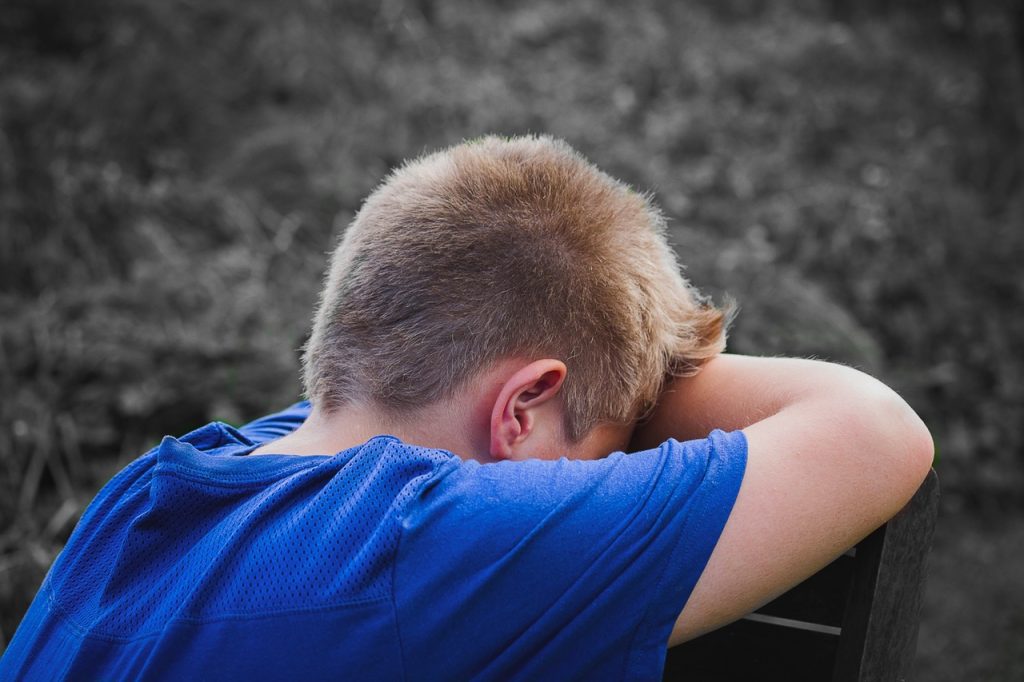
Intentionally hurting yourself isn't a mental disorder in or of itself. But it is a behavior that's often associated with anxiety, stress, depression, borderline personality disorder, PTSD, and substance abuse disorder. The cutting and banging and burning tend to worsen over time, especially when the co-occurring problem remains unaddressed.
Since self-harm is a coping mechanism, the frequency of harm increases as the person's mental health degrades. This escalates the overall risk and danger. Besides, when substances are involved, there's an increase in harming behavior with more chance of severe injury. Most ER visits from self-harm happen when the individual has been abusing drugs or alcohol and harms themselves more severely than intended.
If a loved one has co-occurring disorders, he or she should seek professional help. According to National Institute on Drug Abuse, anyone seeking help for comorbid conditions should be evaluated for both disorders and treated accordingly. That’s why you have to find a reputable addiction treatment center that offers effective behavioral therapies like:
As mentioned above, self-harm can happen when an individual has an addiction problem. However, the opposite is also true. And individual can turn to drugs and alcohol in an attempt to numb their feelings or alleviate stress. But since drugs and alcohol impair motor skills, slow reaction times, and interfere with nerve ending connections, they may make it hard for an individual to control their self-harm behaviors.

In addition to substance use disorders and mental health issues, other self-harm risk factors include:
Many people who engage in these acts don't want others to find out. So they do so in secrecy and cut places that are hard to spot, like on the stomach, higher up on the thighs, or arms. Most of them seem normal or even happier on the outside, with no sign tell-tale sign of the habit. This makes it hard to know if your loved one is self-harming or cutting. However, some signs of self-harm include:
Strange scars: if a loved one is cutting or scratching, chances are they will have strange scars on their body. Look out for scar tissue or multiple cuts in one location. Cutting addiction may also include thin lines like those from a sharp object.
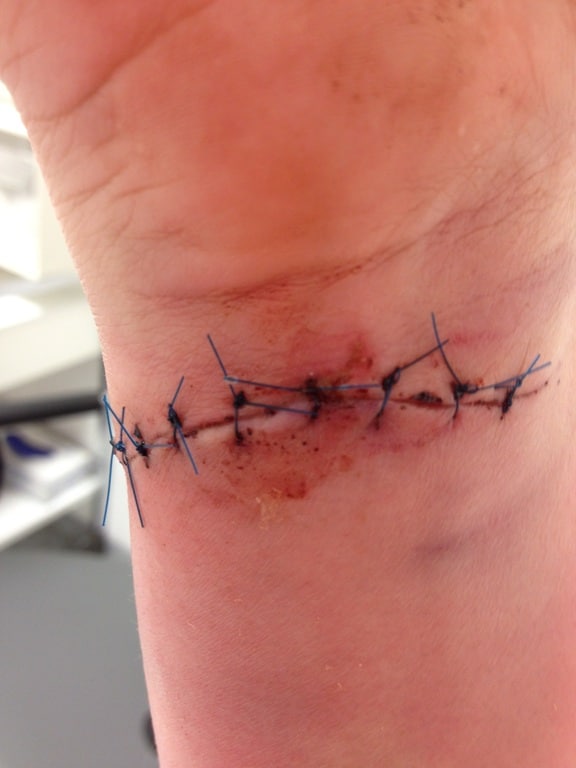
Unexplained abrasions or cuts: Your loved one could be cutting if they always blame accidents or clumsiness for their injuries or bandages.
Bloodstains on clothes: Nothing is alarming about spotting blood on your loved one's belongings. However, if you notice blood on the sink, toilet paper, hand towels, or clothes, it could be a sign they are self-harming.
Covering the skin: Your loved one may insist on wearing pants and long-sleeved clothes even when it’s hot outside. That's because they don't want you to see the scars.
Isolation: People who cut tend to isolate themselves because of depression or the need to hide their behavior. They may also feel irritable or uncomfortable in public.
Keep in mind that these warning signs vary among individuals. So, it is worth looking into any strange behaviors your loved one is showing. They could be crying out for help, but you don't even notice. And even if self-harm is not the issue, your loved one could be struggling with another serious issue, like substance abuse or depression.
Self-harm like burning or cutting may offer temporary relief to physical and emotional pain. However, in the end, it may cause feelings of shame and guilt along with physical side effects like anemia and infections. A cutting addiction is hazardous because one may cut a vein and bleed to death or cause long-term nerve or tendon damage.
Growing evidence suggests that behavioral addictions like cutting and self-harm mimic substance addictions in many ways. They have similar phenomenology, natural history, overlapping genetic contribution, comorbidity, tolerance, neurobiological mechanism, and response to treatment. So, self-harm patients may benefit from various therapies that we mentioned above and treatments offered in addiction centers.